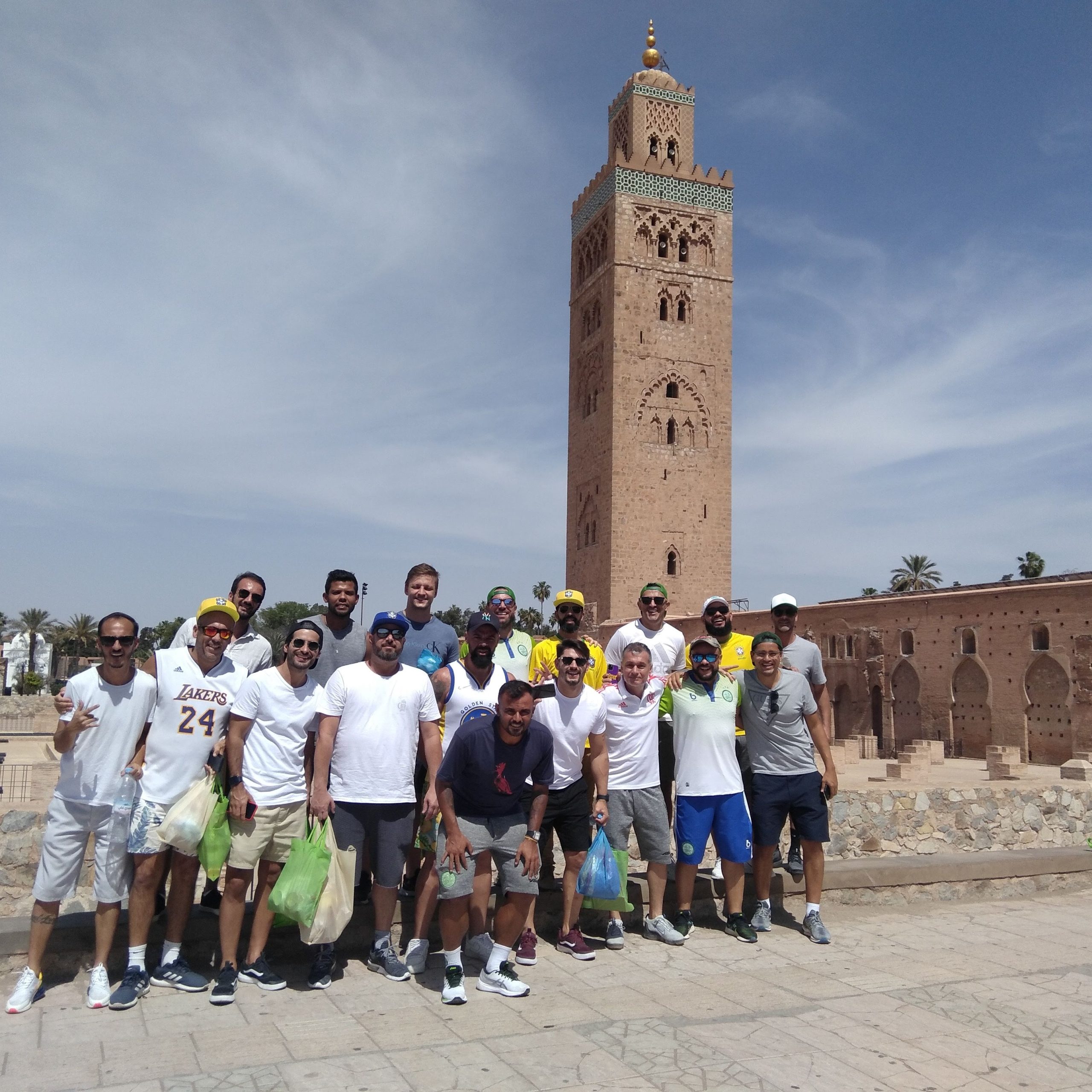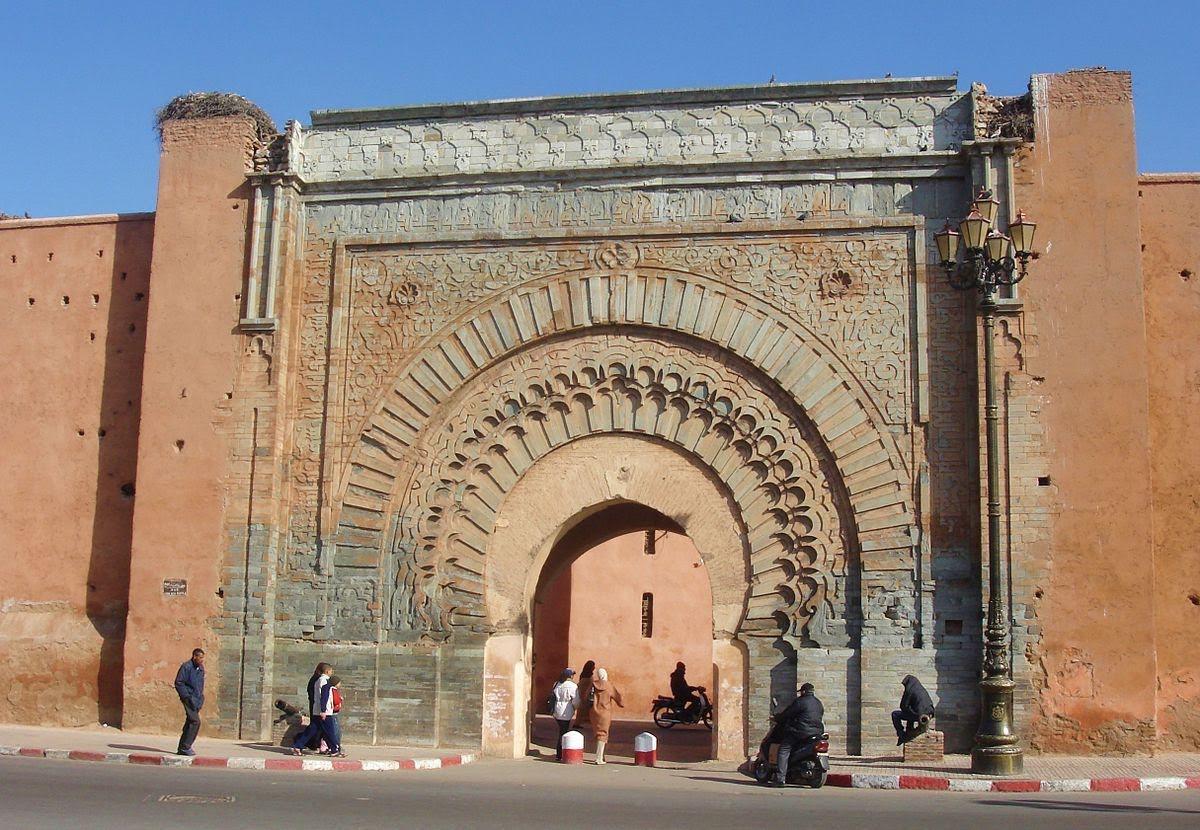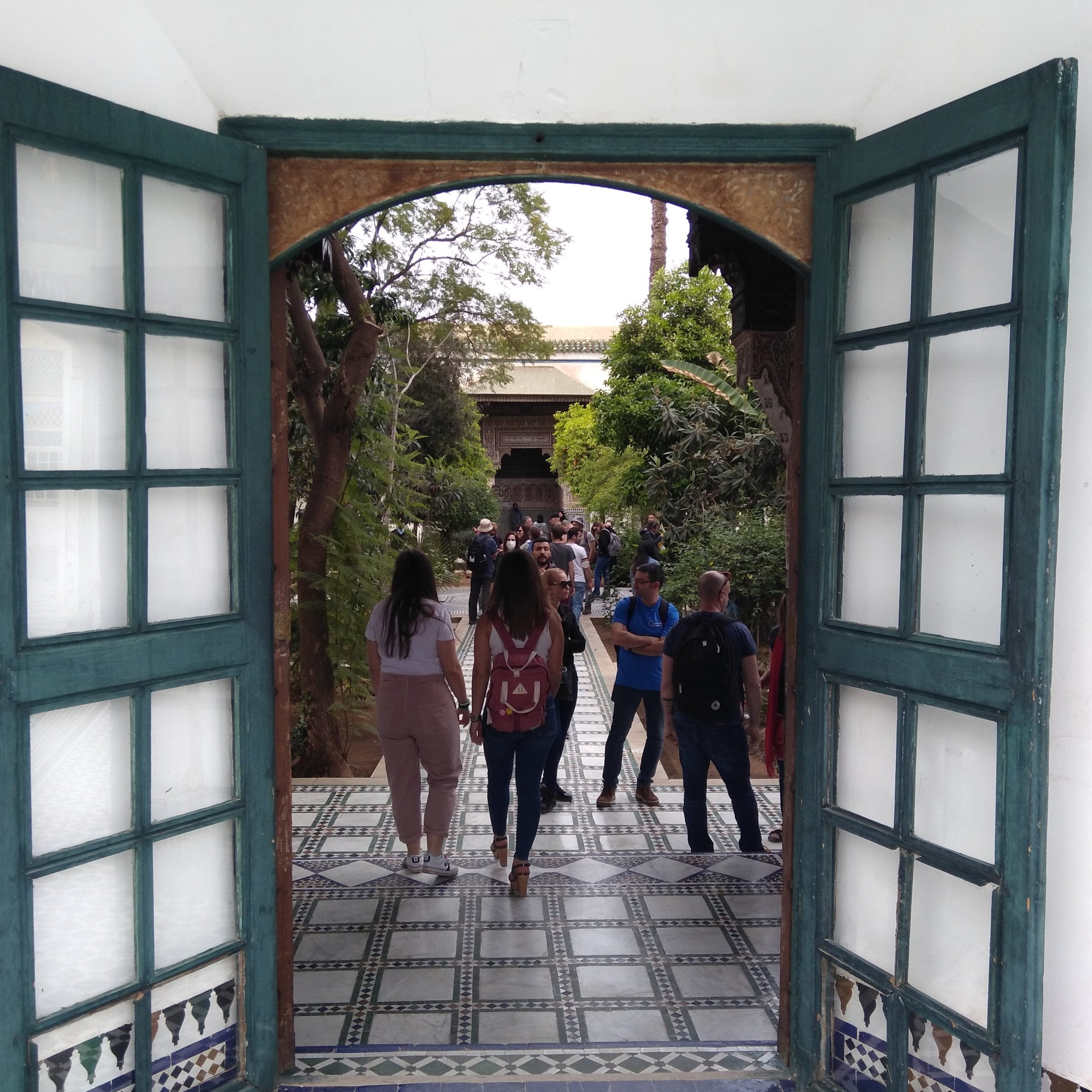0 avis
4h
Parcours journalier
2-18 personnes
Anglais, Français
Marrakech, also known as the « Red City, » is a vibrant and historic city in Morocco that is famous for its bustling souks, stunning architecture, and rich cultural heritage. Taking a walking tour of Marrakech is one of the best ways to immerse yourself in the city’s history and culture, and experience its unique blend of Arab, Berber, and European influences. In this essay, I will describe a historical walking tour of Marrakech, highlighting some of the city’s most significant landmarks and cultural attractions. We will begin our tour at the famous Jemaa el-Fnaa square, which is the heart of Marrakech’s old city. This bustling square is a UNESCO World Heritage Site and is home to a vibrant array of street performers, food vendors, and market stalls. Here, we will see storytellers, snake charmers, acrobats, and musicians, all vying for the attention of the crowds that gather here each day. We will also take a walk through the nearby souks, which are a maze of narrow alleyways lined with shops selling everything from spices and textiles to jewelry and ceramics. From Jemaa el-Fnaa, we will make our way to the Koutoubia Mosque, which is one of the most iconic landmarks in Marrakech. Built in the 12th century, the Koutoubia Mosque is a masterpiece of Islamic architecture and is renowned for its towering minaret, which stands at over 70 meters tall. We will take a walk around the mosque’s beautiful gardens and admire its intricate geometric patterns, before heading inside to see the stunning prayer hall and the ornate mihrab, which indicates the direction of Mecca for Muslims. Next, we will visit the Bahia Palace, which is a magnificent example of Moroccan palace architecture. Built in the late 19th century, the Bahia Palace was home to the grand vizier of Marrakech and is renowned for its intricate tilework, carved stucco, and beautiful gardens. We will explore the palace’s many courtyards, reception halls, and private apartments, and learn about the lives of the royal family who once lived here. From the Bahia Palace, we will head to the Saadian Tombs, which are a fascinating glimpse into Marrakech’s past. The Saadian Tombs were discovered in the early 20th century and contain the remains of members of the Saadian dynasty, which ruled Morocco from the 16th to the 17th centuries.
Plus de photos
the Koutoubia Mosque, which is one of the most iconic landmarks in Marrakech. Built in the 12th century, the Koutoubia Mosque is a masterpiece of Islamic architecture and is renowned for its towering minaret, which stands at over 70 meters tall. We will take a walk around the mosque's beautiful gardens and admire its intricate geometric patterns, before heading inside to see the stunning prayer hall and the ornate mihrab, which indicates the direction of Mecca for Muslims.

the Saadian Tombs, which are a fascinating glimpse into Marrakech's past. The Saadian Tombs were discovered in the early 20th century and contain the remains of members of the Saadian dynasty, which ruled Morocco from the 16th to the 17th centuries.

Bahia Palace is a magnificent architectural gem located in Marrakech, Morocco. Spread over a vast area, the palace is a testament to the rich history and cultural heritage of the region. With its intricate designs, lush gardens, and opulent interiors, Bahia Palace stands as a remarkable example of Moroccan craftsmanship and elegance.
The palace was built in the late 19th century by Grand Vizier Si Moussa, who intended it to be a grand residence for his family. However, it was later expanded by his successor, Bou Ahmed, to accommodate his four wives and numerous concubines. Today, Bahia Palace serves as a popular tourist attraction, drawing visitors from all over the world.
As you enter the palace, you are greeted by a stunning courtyard adorned with orange trees and fragrant flowers. The courtyard is surrounded by beautifully tiled walkways and intricate geometric patterns, showcasing the mastery of Moroccan artisans. The architecture seamlessly blends Islamic and Moroccan styles, featuring carved stucco, painted ceilings, and colorful zellij tilework.
Exploring further into the palace, you'll discover a series of rooms and halls that exude grandeur and splendor. The private quarters of the palace are lavishly decorated with ornate plasterwork, delicate woodcarvings, and exquisite mosaic tiles. Each room tells a story of opulence, with its luxurious furnishings, silk tapestries, and handcrafted furniture.
One of the highlights of Bahia Palace is the Grand Court, a vast space adorned with beautiful gardens and fountains. The court offers a serene oasis in the heart of the bustling city, inviting visitors to relax and soak in the beauty of their surroundings. The meticulous landscaping features lush greenery, fragrant roses, and vibrant bougainvillea, creating a picturesque setting.
As you wander through the palace, you'll encounter numerous salons, reception halls, and courtyards, each with its own unique charm. The intricately carved cedar ceilings, stucco arches, and stained glass windows transport you to a bygone era of elegance and refinement. The palace's rich history is palpable in every corner, evoking a sense of awe and wonder.
In addition to its architectural marvels, Bahia Palace also houses a museum that showcases Moroccan art and artifacts. Visitors can admire traditional clothing, jewelry, ceramics, and historical documents, providing a deeper insight into Moroccan culture and traditions.
Overall, Bahia Palace is a mesmerizing masterpiece that encapsulates the allure of Moroccan architecture and design. Its intricate details, lush gardens, and opulent interiors leave visitors captivated and inspired. A visit to this remarkable palace is a journey through time, offering a glimpse into the opulent lifestyle of Moroccan royalty and the artistic genius of the craftsmen who brought this architectural marvel to life.

Djemaa El-Fna Square, known as the heart and soul of Marrakech, is a vibrant and captivating public square located in the bustling medina of the city. Spanning an area of approximately 1000 square meters, Djemaa El-Fna is a UNESCO World Heritage site and a melting pot of Moroccan culture, history, and entertainment. Here, let me take you on an immersive journey to describe the essence and allure of Djemaa El-Fna Square in 1000 words.
As the sun begins to set over the red-hued city, Djemaa El-Fna comes alive with a kaleidoscope of sights, sounds, and scents. The square, enveloped by ancient buildings and bustling souks, is a sensory overload that tantalizes the senses. The air is thick with the aroma of exotic spices, sizzling street food, and the sweet scent of freshly brewed mint tea.
The first thing that strikes you is the mesmerizing display of colors. The square is adorned with vibrant red carpets, intricately woven rugs, and a sea of colorful umbrellas. Traditional Moroccan lanterns, known as "fanoos," cast a warm, golden glow, illuminating the square and creating an enchanting atmosphere.
The heartbeat of Djemaa El-Fna is its people. A diverse mix of locals and tourists intermingle, creating a tapestry of cultures and languages. Street performers, storytellers, and musicians captivate the crowds with their mesmerizing performances. The hypnotic rhythms of the Gnawa musicians blend with the melodies of the traditional Moroccan instruments, like the oud and the darbuka, creating a symphony that echoes through the square.
Food stalls occupy a prominent space in Djemaa El-Fna, forming a culinary paradise for adventurous eaters. The aroma of Moroccan delicacies permeates the air, enticing passersby. The sizzle of skewered meats on open grills, the hiss of aromatic tagines, and the crackle of fresh bread being baked in traditional ovens fill the square. From savory dishes like couscous, harira soup, and grilled kebabs to sweet treats like msemen pancakes, sticky honey pastries, and aromatic mint tea, there is something to satiate every craving.
Amidst the food stalls, you'll find traditional Moroccan artisans showcasing their craft. Intricate woodwork, hand-woven carpets, and colorful ceramics adorn the market stalls, enticing visitors to take home a piece of Moroccan artistry. Skilled henna artists create intricate patterns on eager hands, while snake charmers mesmerize onlookers with their daring performances.
Between the hustle and bustle of the square, you'll find a respite in the surrounding cafes and rooftop terraces. From these vantage points, you can witness the vibrant tableau of Djemaa El-Fna from above. Sipping on a cup of steaming mint tea, you can observe the ebb and flow of the square, the interplay of cultures, and the constant buzz of activity.
Beyond the surface level, Djemaa El-Fna holds a rich historical significance. It has been a gathering place for centuries, serving as a meeting point for traders, travelers, and locals. The square has witnessed the rise and fall of dynasties, the passage of caravans, and the exchange of goods and ideas.
Laisser un commentaire